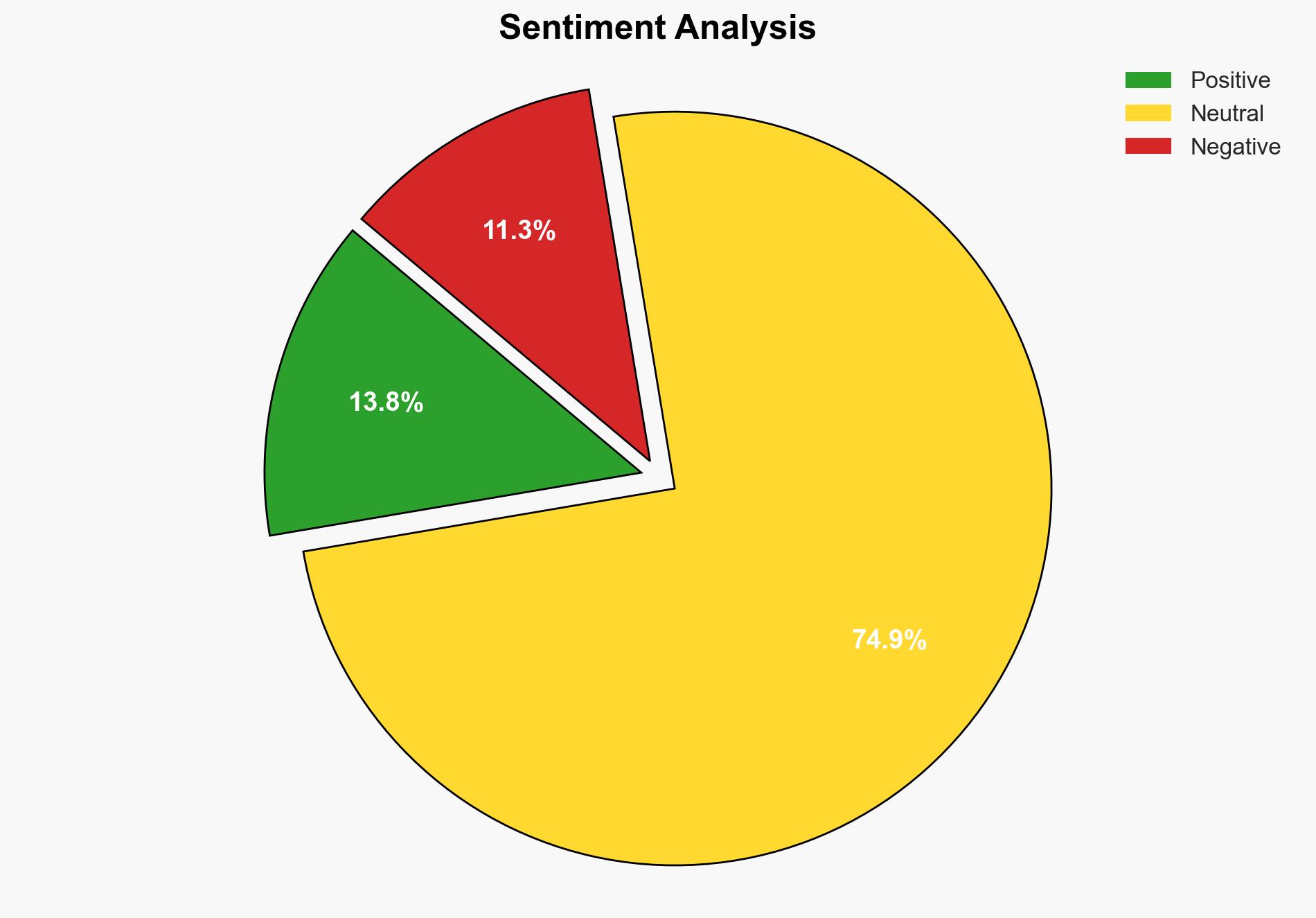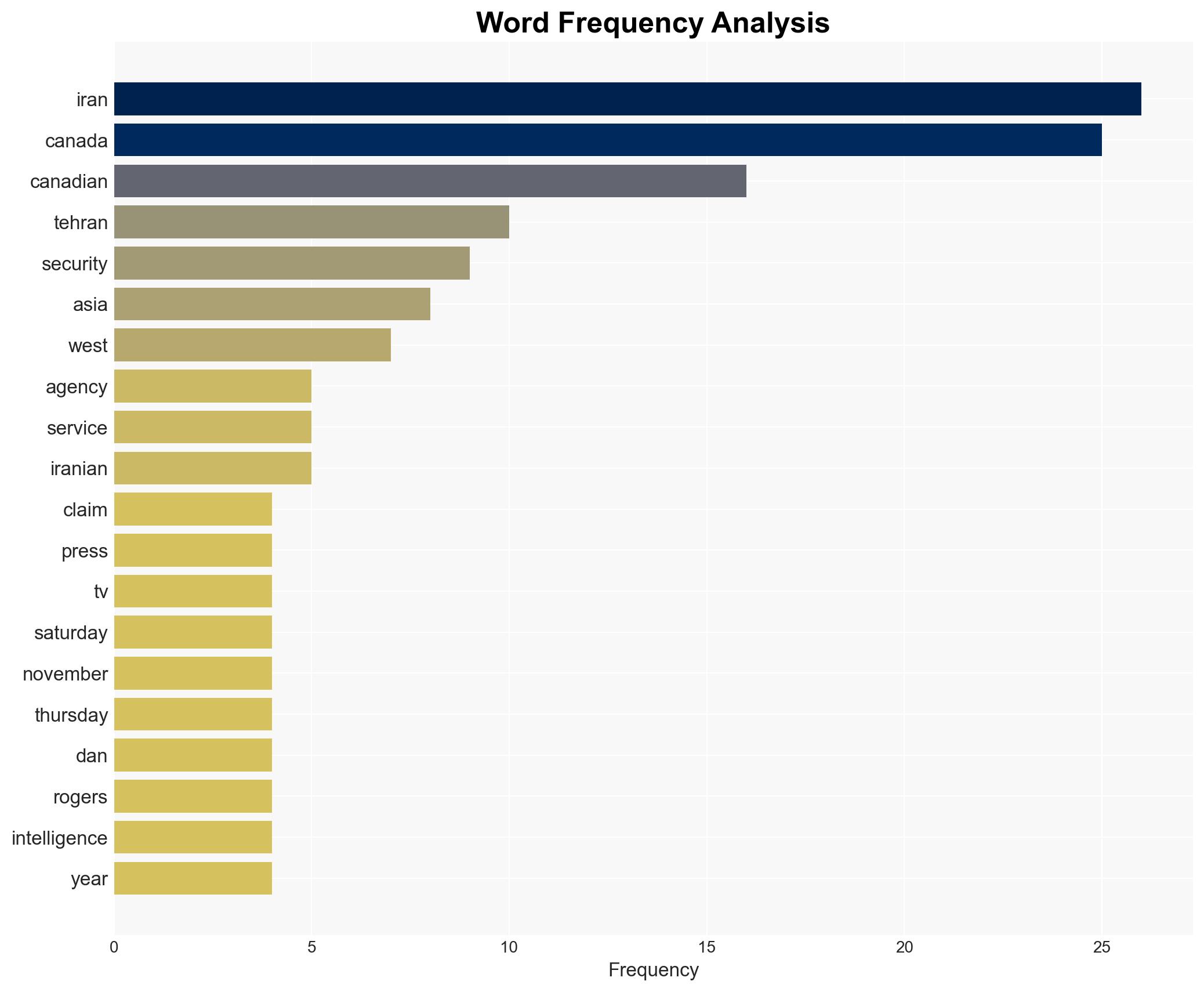Iran rejects Canada’s baseless claims of foiling ‘lethal plots’ by Tehran – Globalsecurity.org
Published on: 2025-11-16
AI-powered OSINT brief from verified open sources. Automated NLP signal extraction with human verification. See our Methodology and Why WorldWideWatchers.
Intelligence Report:
1. BLUF (Bottom Line Up Front)
With a moderate confidence level, the most supported hypothesis is that Canada’s claims of foiling Iranian plots may be based on credible intelligence, but the public dismissal by Iran is a strategic move to maintain its international image and deflect attention from its activities. Recommended action includes strengthening intelligence-sharing frameworks among allied nations and enhancing diplomatic channels to address and de-escalate tensions.
2. Competing Hypotheses
Hypothesis 1: Canada’s claims are based on credible intelligence, and Iran is actively engaging in covert operations targeting individuals perceived as threats. This is supported by the historical context of Iran’s intelligence activities and similar accusations by other nations.
Hypothesis 2: Canada’s claims are exaggerated or misinterpreted, possibly influenced by geopolitical motives or intelligence missteps, and Iran’s rejection is a genuine response to unfounded allegations. This hypothesis considers the potential for intelligence errors and political motivations behind the accusations.
The first hypothesis is more likely due to the pattern of similar accusations by multiple countries, suggesting a broader intelligence consensus on Iranian activities.
3. Key Assumptions and Red Flags
Assumptions include the reliability of Canadian intelligence and the presumption that Iran’s denial is primarily strategic. Red flags involve potential intelligence biases, geopolitical motivations, and the risk of misinterpretation or misinformation. Deception indicators include Iran’s immediate and categorical denial, which could be a tactic to deflect scrutiny.
4. Implications and Strategic Risks
Potential implications include heightened diplomatic tensions between Iran and Western nations, increased cyber and informational warfare, and possible retaliatory actions by Iran. There is a risk of escalation in regional conflicts, particularly involving Iran’s proxies, which could destabilize the Middle East further.
5. Recommendations and Outlook
- Enhance intelligence-sharing frameworks with allies to corroborate claims and ensure accuracy.
- Engage in diplomatic dialogues with Iran to address concerns and reduce tensions.
- Monitor for signs of escalation in cyber and informational domains.
- Best-case scenario: Diplomatic engagement leads to de-escalation and improved relations.
- Worst-case scenario: Escalation leads to increased regional instability and potential conflict.
- Most-likely scenario: Continued diplomatic tensions with sporadic incidents of cyber and informational conflict.
6. Key Individuals and Entities
Dan Rogers, Director of the Canadian Security Intelligence Service; Zahra Ershadi, Iran’s Deputy Permanent Representative to the United Nations.
7. Thematic Tags
Structured Analytic Techniques Applied
- Cognitive Bias Stress Test: Expose and correct potential biases in assessments through red-teaming and structured challenge.
- Bayesian Scenario Modeling: Use probabilistic forecasting for conflict trajectories or escalation likelihood.
- Network Influence Mapping: Map relationships between state and non-state actors for impact estimation.
Explore more:
National Security Threats Briefs ·
Daily Summary ·
Support us
·





